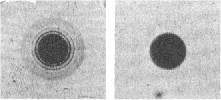|
Earth Science Associates |
||||||||||||||
|
|||||||||||||||
|
Creation's Tiny Mystery |
|||||||||||||||
|
|
< Prev T of C ... 12 13 14 15 Epi. Cat. App. Ref. Cred. Next >
Many have noted a conservatism in science essential to its orderly advance: skepticism toward radically new ideas enables scientific journals to retain focus, prevents anarchic descent into theoretical chaos, and makes it possible to extend currently reigning theories as far as they can bear before replacing them with other theories yet more embracive. A successfully modified, "tested" theory is preferable to a new "untried" theory. And so scientific knowledge advances in an orderly fashion, with as few wrong turns as possible.* [* This conservatism—and its deceptive advantages—will receive continuing discussion in these newsletters.] Gentry has so far avoided clashing with this conservatism, chiefly by concentrating his efforts on publication of data rather than discussion of their implications—and also by the good fortune that his work has been slow to draw widespread attention. That is beginning to change, however. But perhaps the reaction of a number of prominent physicists to Gentry's work on polonium halos (see insets on this and the following page) is the most significant gauge of what will be forthcoming. This reaction is noteworthy both for the confidence expressed in Gentry's work and for the almost uniformly conservative—albeit open—stance toward any extrapolations from the raw data that challenge accepted theory. Of those whose opinions we sampled, only one seemed to suggest (without wishing to be quoted) that we not publicize Gentry's work. He felt that the subject should be "left to the experts," while cautioning that it is too early to reject the conventional view of Earth's history. In the end, it is, presumably, the evidence which will decide the issue. Let us look more closely at the radiohalos themselves. THE NATURE OF HALOSIf a small grain (inclusion) containing radioactive atoms is embedded in certain rock minerals, the alpha particles emitted from the radioactive atoms travel outward from the inclusion and damage the crystalline structure of the mineral, in time producing the visible discoloration typifying halos. Since each type of radioactive atom emits alpha particles with a characteristic energy, and since this energy determines how far the particle will travel in the host mineral, the diameter of a halo's rings guides researchers in determining which radioactive element is responsible for the halo. If the radioactive element in an inclusion is the initiator of a decay series, then a group of concentric halo rings results, each ring corresponding to a step in the decay series, that is, to alpha particles of a particular energy. In the case of the 238U series, with eight alpha-decay steps, there are five distinct halo rings (some of the alpha particles are so close together in energy that their rings are not distinguishable). The conventional argument drawn from observed radiohalo sizes is summarized by Struve: "There is excellent evidence that the rates of radioactive processes measured in the laboratory at the present time are valid also for the remote past. If a radioactive element and its decay products are embedded in a crystal, each alpha particle emitted during disintegration travels a certain distance that depends only on the rate of that particular decay step. The more rapid this rate, the greater the energy of the alpha particles, and the farther they go before being stopped and producing a color change in the crystal.
"Suppose a speck of 238U has remained undisturbed since the formation of a mineral containing it. Then, because the rate of disintegration at each successive emission is different, eight concentric rings of mineral discoloration will be found surrounding the particle of uranium. These rings . . . have been found in many rocks of different geological ages, and the diameters of the respective rings are always the same. "Thus it can be concluded that the rates of disintegration of uranium and thorium are constant" (2). As we will learn in a subsequent review, the evidence from halos has led Gentry in a direction quite opposite from Struve's. But more than that, Gentry's halo research appears to strike at the roots of virtually all contemporary cosmologies, posing a fundamental problem which has so far resisted every effort to solve it in conventional terms. This is the problem of the polonium halos.
Doc.: T of C #1 #2 #3 #4 #5 #6 #7 #8 #9 ... < Prev T of C ... 12 13 14 15 Epi. Cat. App. Ref. Cred. Next > |
|
||||||||||||
|
|
|||||||||||||||
|
|||||||||||||||
|
Earth Science Associates
|
|||||||||||||||



